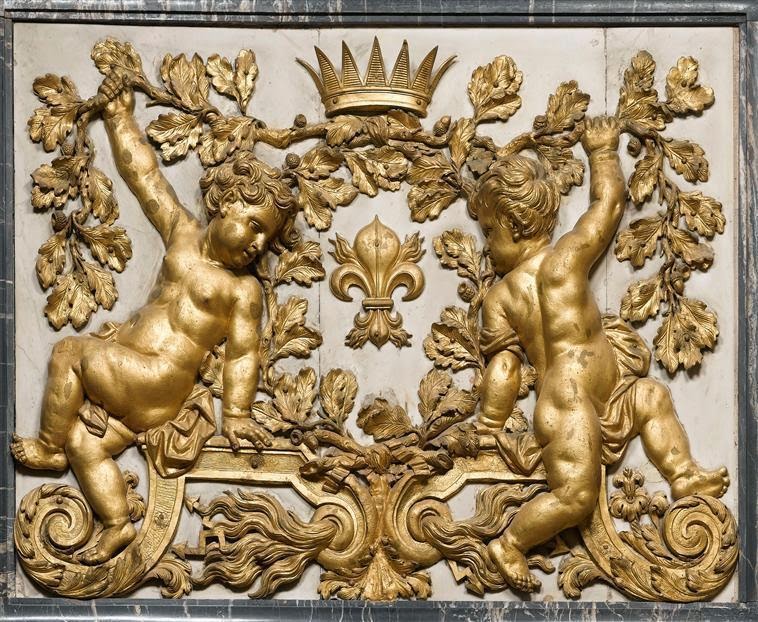The handsome portrait of Michael Krafft 1830's
Today were are touring The Mobile Carnival Museum located in Mobile, Alabama. This is part 1 or a three part series enjoy. The Mobile Carnival Museum is a wonderful museum. The staff is warm and friendly. You can take all of the photo's you like in the Museum. I highly recommend this museum if you are visiting Mobile, Alabama.
The Museum is located in the historic Bernstein-Bush mansion built in 1872 for Henry Bernstein, a boot and shoe dealer. The mansion was designed by architect James H. Hutchisson in the mixed style of Italianate and Greek Revival styles. The interiors of this house is particularly fine detail of beautifully cast plaster details and Mid 19th century Gasoliers original from fine mansions torn down on the next block in the 1960's. The gasoliers were moved to this house. The home is registered as a historic building. The accumulation of royal robes, crowns and scepters is beautifully displayed throughout the museum.
The terms "Mardi Gras" (pronounced /ˈmɑrdiɡrɑː/), "Mardi Gras season", and "Carnival season",in English, refer to events of the Carnival celebrations, beginning on or after Epiphany and ending on the day before Ash Wednesday. Mardi Gras is French for "Fat Tuesday" (in ethnic English tradition, Shrove Tuesday), referring to the practice of the last night of eating richer, fatty foods before the ritual fasting of the Lenten season, which started on Ash Wednesday.
While not observed nationally throughout the United States, a number of traditionally ethnic French cities and regions in the country have notable celebrations. Mardi Gras arrived in North America as a French Catholic tradition
Bienville found the settlement of Mobile, Alabama in 1702 as the first capital of French Louisiana. In 1703 French settlers in Mobile began the Mardi Gras celebration tradition. Mobile is known for having the oldest organized carnival celebrations in the United States, dating to the 18th century of its early colonial period. It was also host to the first formally organized Carnival mystic society or "krewe" in the United States, dating to 1830.
A portrait of Michael Krafft . About 11 years after Alabama became a state (1819), a group of revelers, led by Michael Krafft, who was likely influenced by his Pennsylvania Swedish traditions of celebrating the New Year, stayed awake all New Year's Eve, started a dawn parade on January 1, 1831, making noise with cowbells, hoes, and rakes. The group became the first parading mystic society (or "krewe"), calling themselves the Cowbellion de Rakin Society, in a parody of French. They had annual parades each New Year's Eve. Nearly 125 years after Mobile's first parade of 1711, the new mystic society from Mobile, the Cowbellion de Rakin Society (1830), took their parade into New Orleans, circa 1835. In 1838, people in New Orleans adopted the "European custom of celebrating the last day of the Carnival by a procession of masqued figures through the streets."
The pictorial hallway of the house
The Gasoliers in the home are amazing, each one is different they date from the 1840's-1850's and were made on the East Coast. They were original to mansions on the next block of the museum. But theses homes were demolished in the 1960's to make way for a park. The Gasoliers found a new home in the historic Bernstein-Bush mansion.
The pictorial gallery of historical photographs dating back to 1886
The pictorial gallery of historical photographs dating back to 1886
Royal Pages in costume
The Gasoliers in the home are amazing, each one is different they date from the 1840's-1850's and were made on the East Coast. They were original to mansions on the next block of the museum. But theses homes were demolished in the 1960's to make way for a park. The Gasoliers found a new home in the historic Bernstein-Bush mansion.
The beautiful ornate plaster arch in the double parlors
The Gasoliers in the home are amazing, each one is different they date from the 1840's-1850's and were made on the East Coast. They were original to mansions on the next block of the museum. But theses homes were demolished in the 1960's to make way for a park. The Gasoliers found a new home in the historic Bernstein-Bush mansion.
Original 1872 marble mantel in the double parlors of the home
Beautiful plaster bracket at the end of the arch in the double parlor
The middle of the arch in the double parlor
Royal robes of Mardi Gras monarchs
Original 1872 marble mantel in the double parlors of the home
Detail of cast-iron grate
Look at the amazing details of this robe
A page costume
The Striker's Goat
A cabinet of page costumes
This Petit King costume is the cutest thing I have ever seen. It is the oldest costume in the museum dating to 1930 and originally belonged to James Van Antwerp, Jr. The Juvenile King. The train was originally scarlet velvet but has now faded to a orange color.
Check out his slippers of gold lace with rhinestone buckles
I love that they found a mannequin from the 1930's that also goes along with the outfit.
Remember this was the year after The Great Depression 1930 this costume would have cost a fortune!























































How Fun, Richard at www.myoldhistorichouse.blogspot.com
ReplyDelete